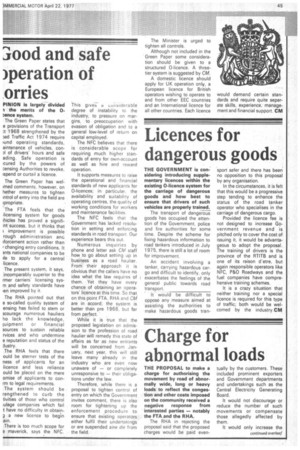Licences for dangerous goods
Page 47

If you've noticed an error in this article please click here to report it so we can fix it.
THE GOVERNMENT is considering introducing suppler mentary licences within the existing 0-licence system for the carriage of dangerous goods and how best to ensure that drivers of such vehicles are properly trained.
The transport of dangerous -goods has occupied the attention of the Government, police and fire authorities for some time. Despite the scheme for fixing hazardous information to road tankers introduced in July 1975, there is still a lot of room for improvement.
An accident involving a tanker, carrying hazardous cargo and difficult to identify, only exacerbates the feelings of the general public towards road transport.
It would be difficult to oppose any measure aimed at 'assisting the authorities to make hazardous goods tran sport safer and there has been no opposition to this proposal by any organisation.
In the circumstances, it is felt that this would be a progressive step tending to enhance the status of the road tanker operator who specialises in the carriage of dangerous cargo.
Provided the licence fee is not designed to increase Government revenue and is pitched only to cover the cost of issuing it, it would be advantageous to adopt the proposal, The training of drivers is the province of the RTITB and is one of its raison d'etre, but again responsible operators like NFC, P&O Roadways and the fuel companies have comprehensive training schemes.
It is a crazy situation that neither training nor a special licence is required for this type of traffic; both would be welcomed by the industry.CM




















































































